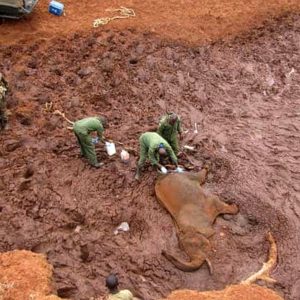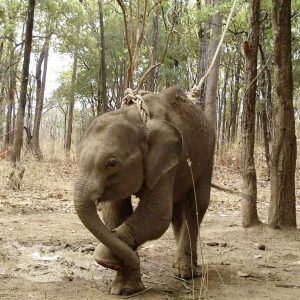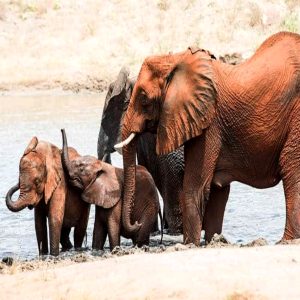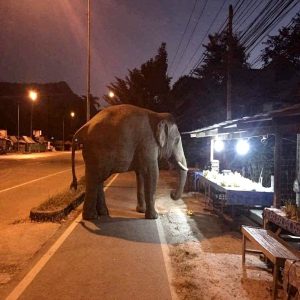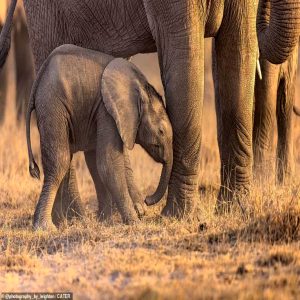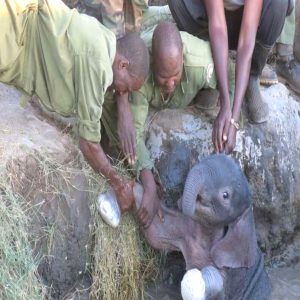 © naturepl.com / Anup Shah / WWF
© naturepl.com / Anup Shah / WWF
Elephants are ecosystem engineers and play a vital role in their native habitats, helping maintain the rich biodiversity of the spaces they share with other wildlife. Though elephants are native to only Africa and Asia, they hold significant cultural and symbolic meaning around the world.
WWF focuses on conserving the world’s largest land mammal in landscapes across both Asia and Africa. We work with wildlife managers, governments, and local communities to stop poaching, reduce human-wildlife conflict, maintain connectivity, and improve monitoring and research.
Here’s a look at some interesting facts about elephants and what WWF is doing to protect them:

© A. Christy Williams / WWF-Canon

© Jessica Boklan
1. What’s the difference between Asian and African elephants?
There are more than 10 physical characteristics that differentiate Asian and African elephants. For example, Asian elephants’ ears are smaller compared to the large fan-shaped ears of the African species. Only some male Asian elephants have tusks, while both male and female African elephants grow tusks. It is also important to note that there are two distinct elephants species on the African continent—the savanna elephant and the forest elephant, with a number of characteristics that differentiate them both as well.
 © Will Burrard-Lucas / WWF-US
© Will Burrard-Lucas / WWF-US
2. How many species of African elephant are there?
Following new genetic research, the African elephant was recently split into two different species, the African forest elephant and the African savanna elephant, by the International Union for the Conservation of Nature’s (IUCN) Red List conservation assessment. The African forest elephant is now listed as Critically Endangered, and the African savanna elephant as Endangered. This is important because they face different conservation challenges and occur in separate ranges and habitats throughout Africa.
3. How are African forest elephants and African savanna elephants different from one another?
African forest elephants inhabit the dense rain forest of west and central Africa, while African savanna elephants mostly inhabit the wooded savannas and grasslands of sub-Saharan Africa. They also differ physically. African savanna elephants are larger and their tusks curve outward. The tusks of the smaller African forest elephant are straighter, pointing downward, and they have more rounded ears.

© Martin Harvey / WWF

© naturepl.com / Felis Images / WWF
4. How many muscles does an elephant trunk have?
An elephant trunk has up to 40,000 muscles. A human has more than 600 muscles in the entire body. Elephants use their trunks to help them suck up water for drinking, pick up or touch objects, trumpet warnings, and greet one another.
5. Do elephants have a dominant tusk?
Elephants are either left- or right-tusked, and the dominant tusk is generally smaller because of wear and tear from frequent use.
 © Patrick Bentley / WWF-US
© Patrick Bentley / WWF-US
6. How do elephants use their tusks?
Elephant tusks serve many purposes. These extended teeth can be used to protect the elephant’s trunk, lift and move objects, gather food, and strip bark from trees. They can also be used for defense. During times of drought, elephants even use their tusks to dig holes to find water underground.
 © naturepl.com / Will Burrard-Lucas / WWF
© naturepl.com / Will Burrard-Lucas / WWF
7. Can tusks grow back?
No. Elephant tusks are actually teeth that extend beyond their mouths. They are connected to the skull and have nerve endings, just like our own teeth. Once a tusk is broken, damaged, or removed, it stays that way.

© Christy Williams / WWF

© Martin Harvey / WWF-Canon
8. How often do elephants give birth?
Elephants have the longest gestation period of any mammal—22 months. Females give birth every four to five years. Elephant herds have complex social structures, are led by matriarchs, and are comprised of a group of other adult females and calves, while male elephants tend to live in isolation or small bachelor groups. Forest elephants’ social groups differ slightly and may be comprised of only an adult female and her offspring. However, they may congregate in larger groups in forest clearings where resources are more abundant.
 © _
© _
9. How do elephants help their ecosystem thrive?
Elephants are important ecosystem engineers. They make pathways in dense forested habitat that allow passage for other species. Many tree species in central African and Asian forests rely on seeds passing through an elephant’s digestive tract before they can germinate. An elephant footprint can also enable a micro-ecosystem that, when filled with water, can provide a home for tadpoles and other organisms.
 © naturepl.com / Karl Ammann / WWF
© naturepl.com / Karl Ammann / WWF
10. How does WWF help humans and elephants sustainably coexist?
As wild spaces shrink, elephants and humans are forced into contact, and such instances of human-wildlife conflict often result in crop and property loss for people, and the injury or death of both people and elephants. WWF helps communities manage human-elephant conflict through various methods, including using deterrents to keep elephants out of agricultural fields, adapting farming practices, and creating wildlife corridors to facilitate the movement of elephants away from spaces occupied by humans.

© Mahmud Yani / WWF-Indonesia

